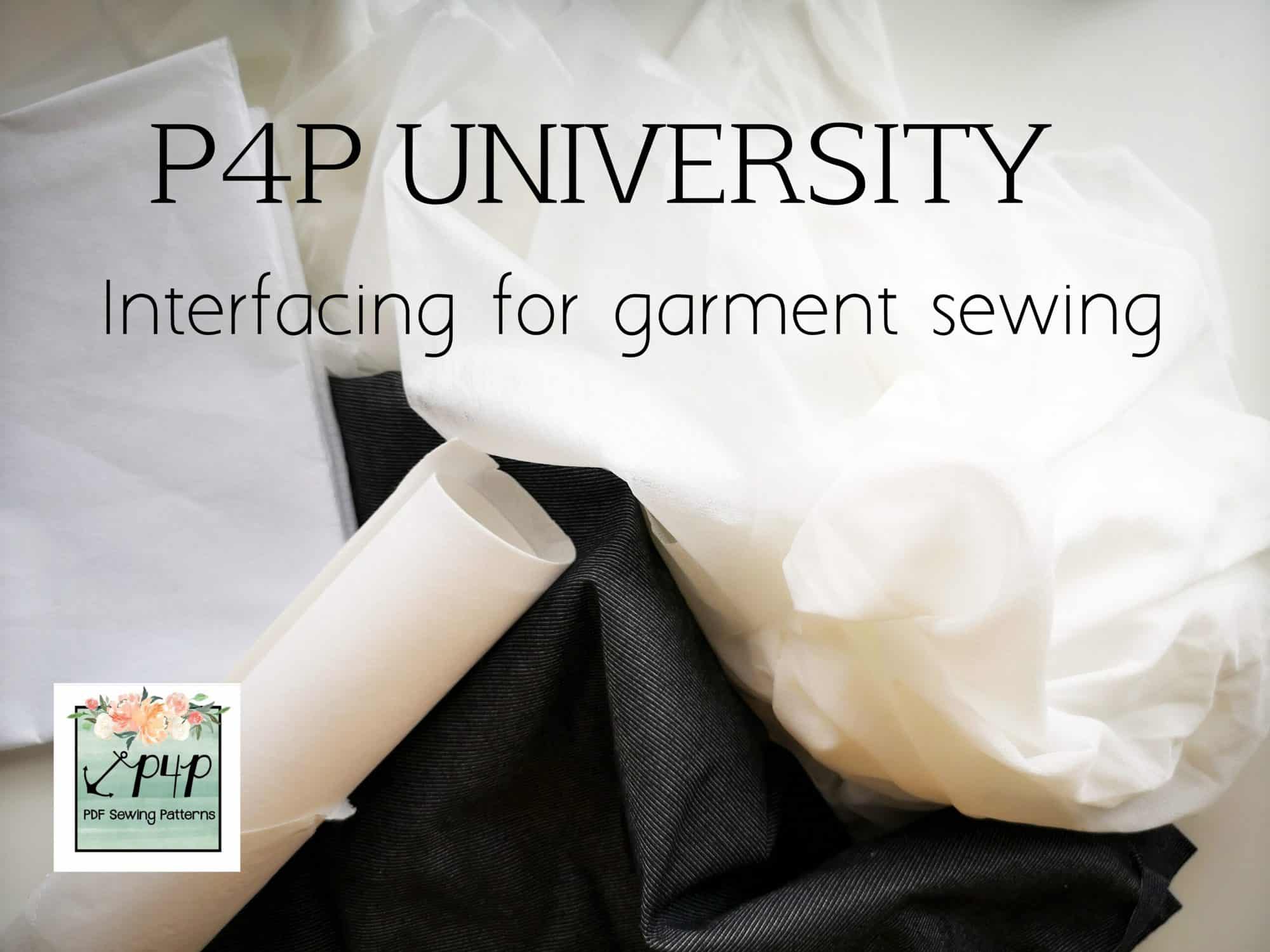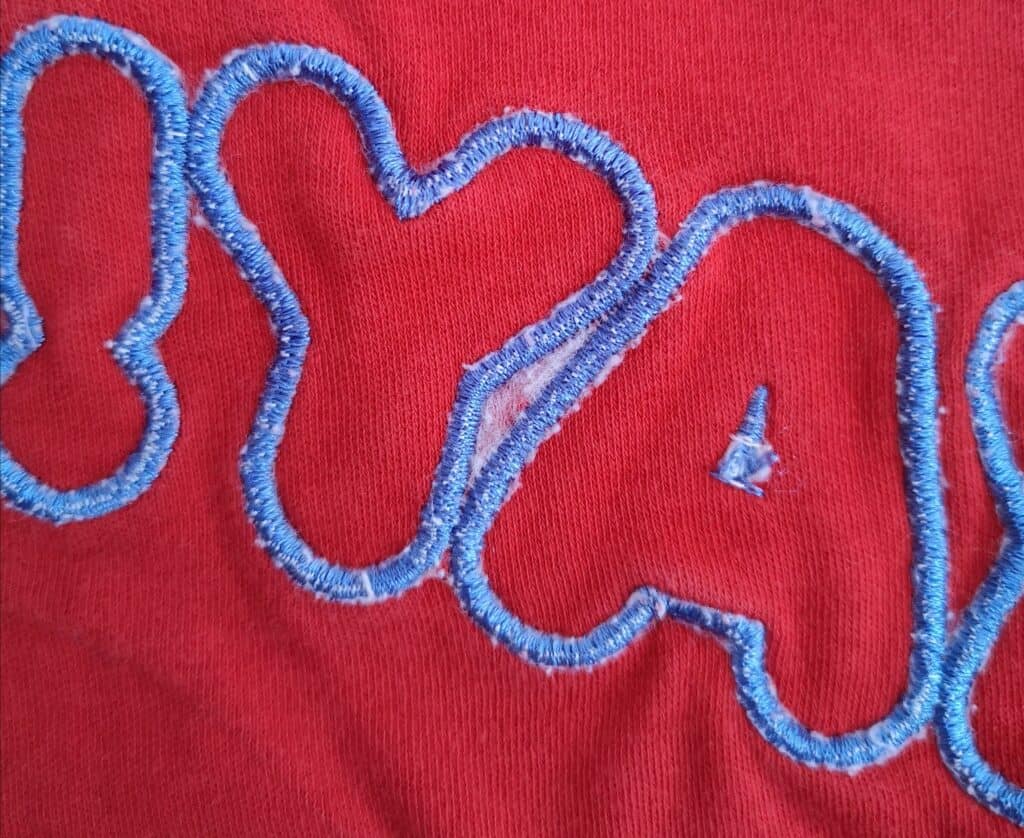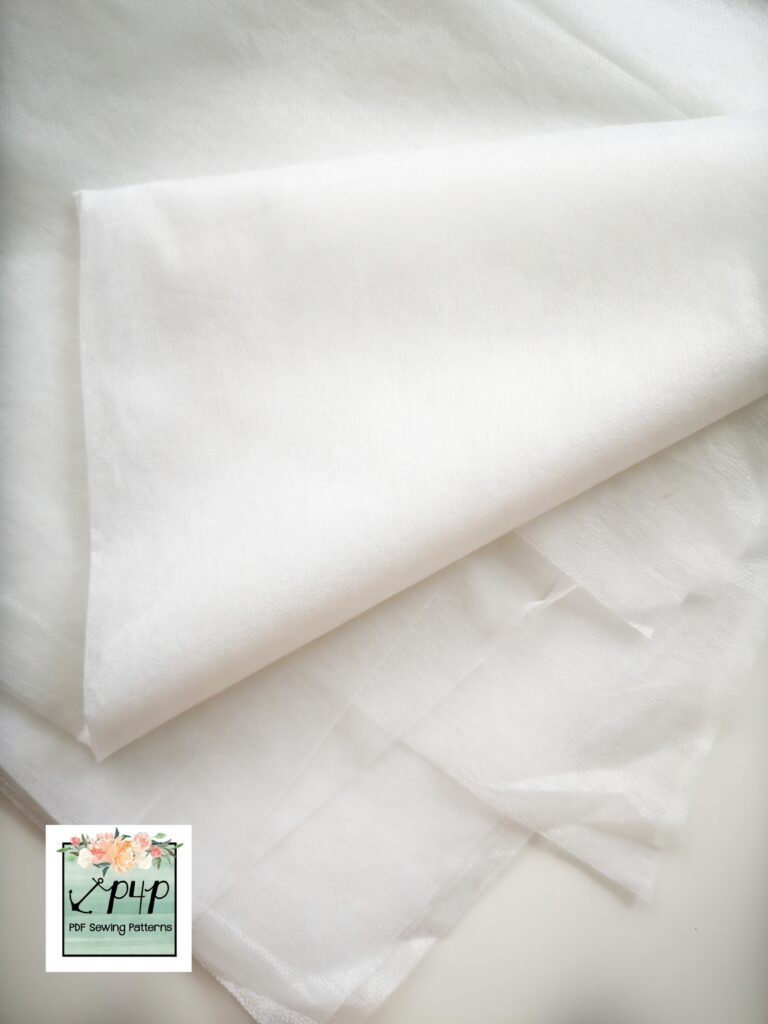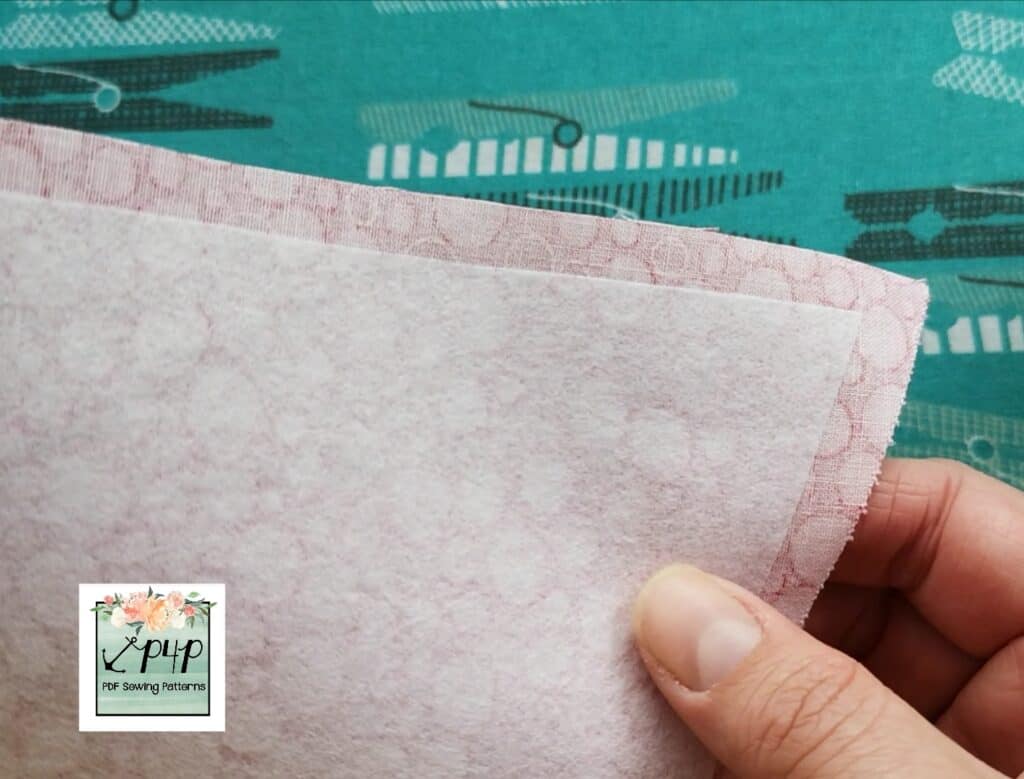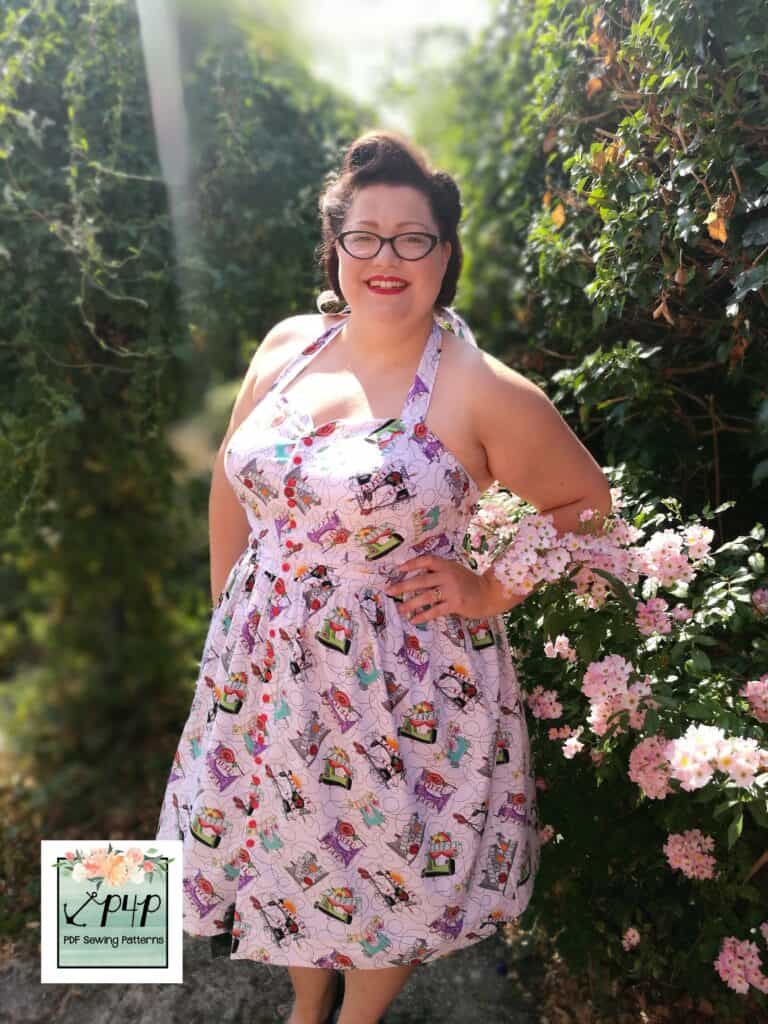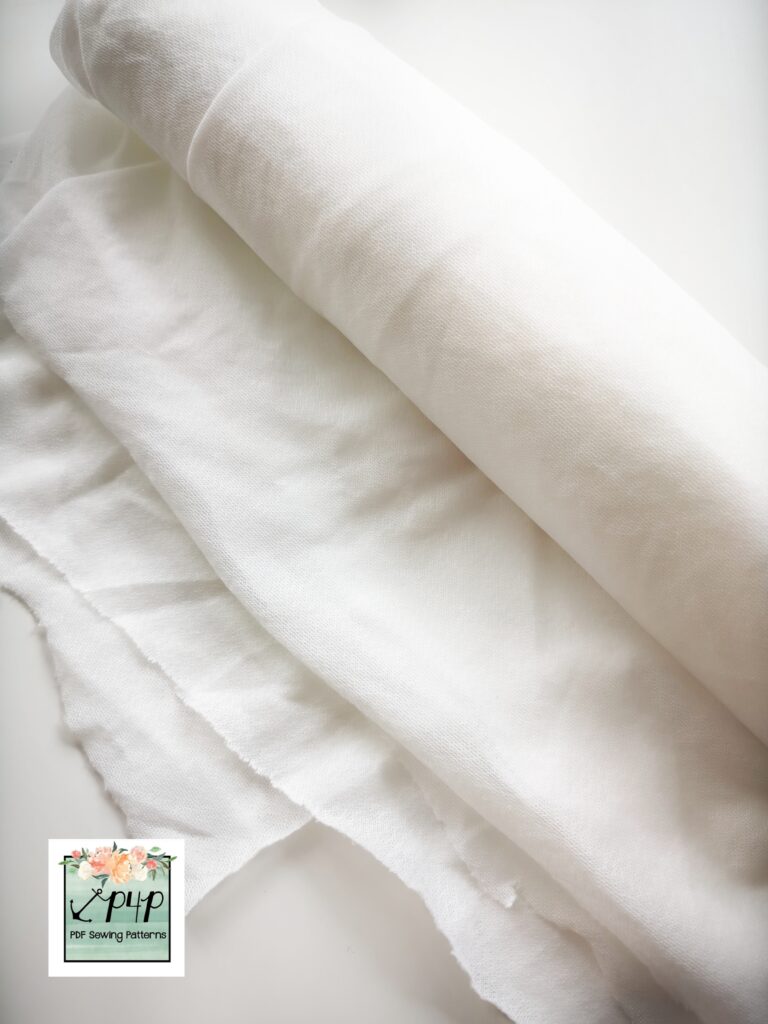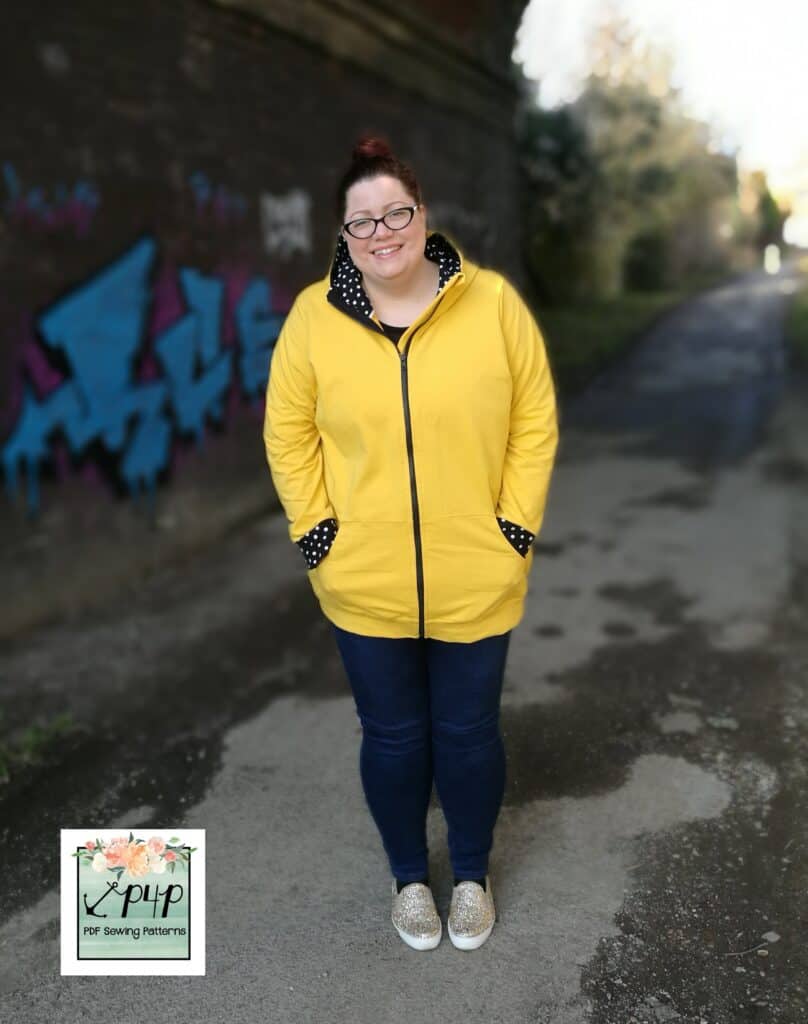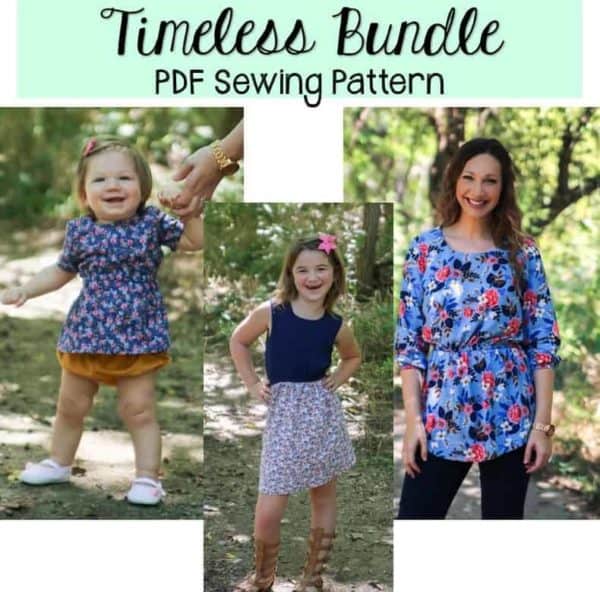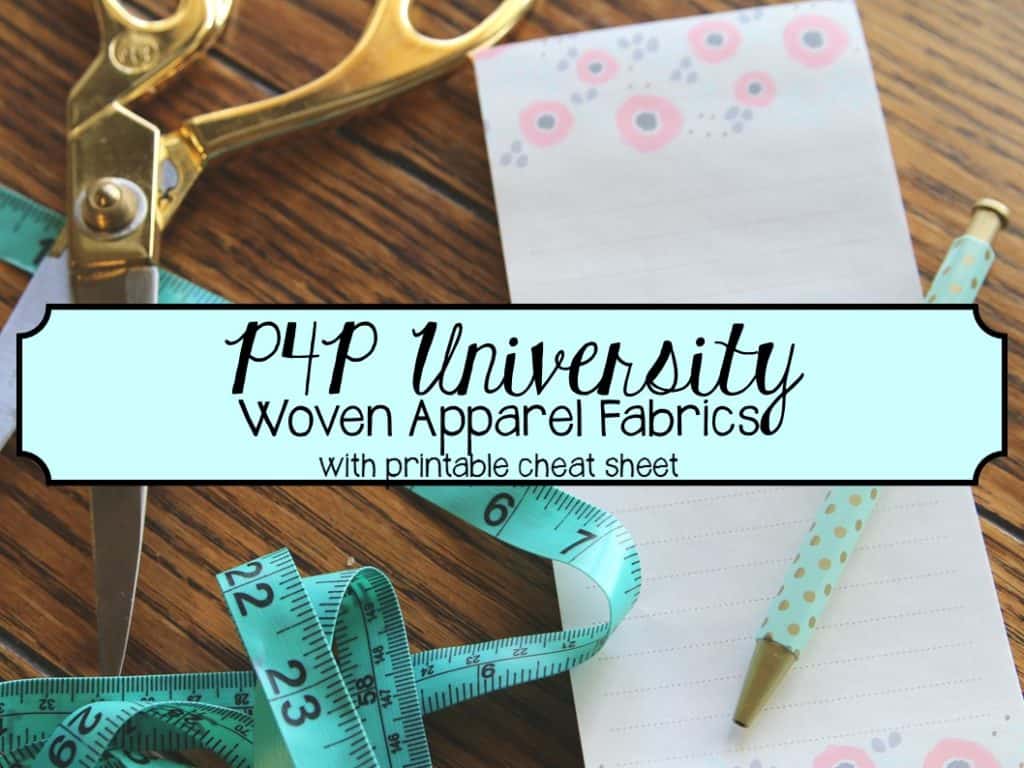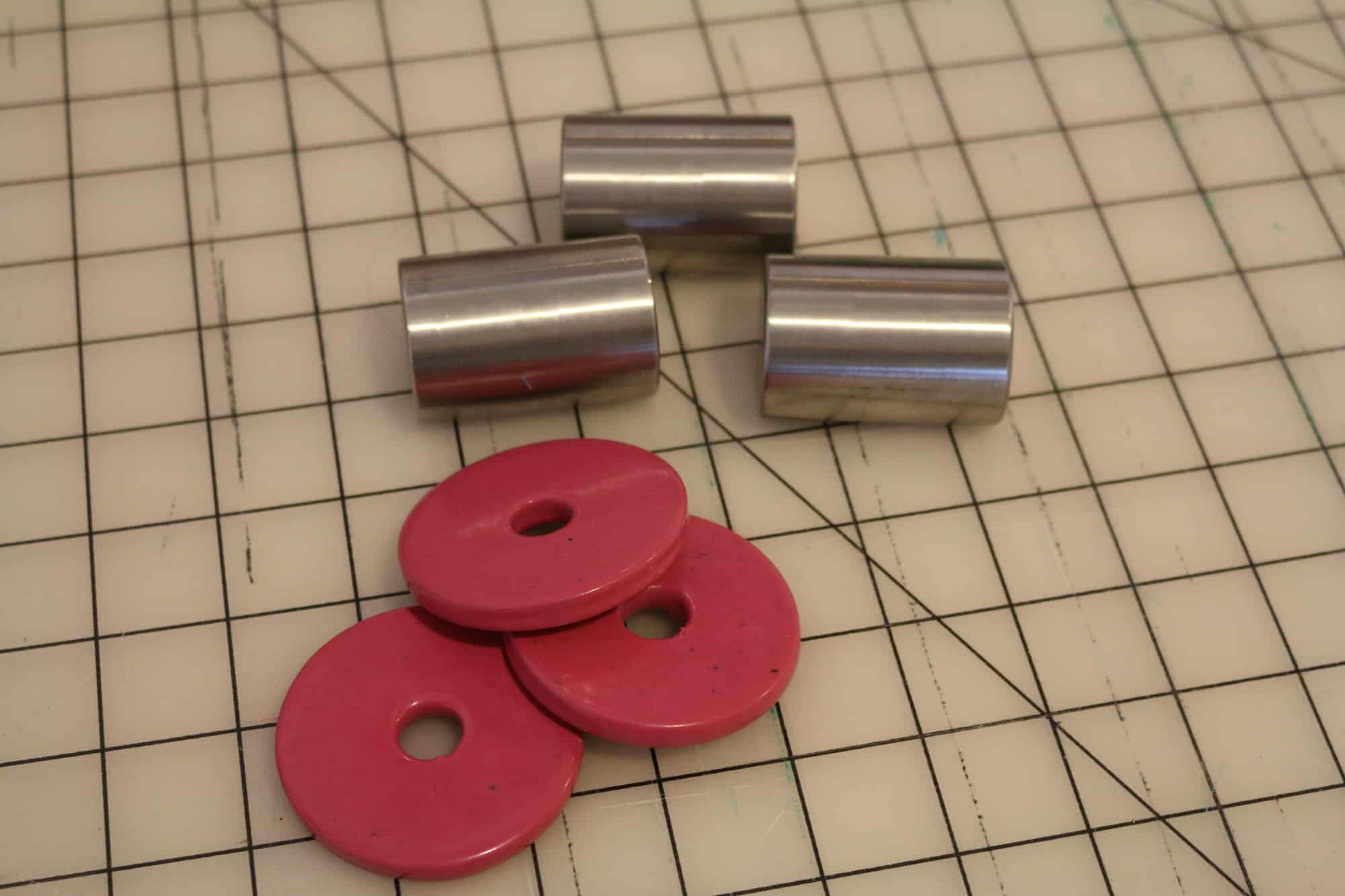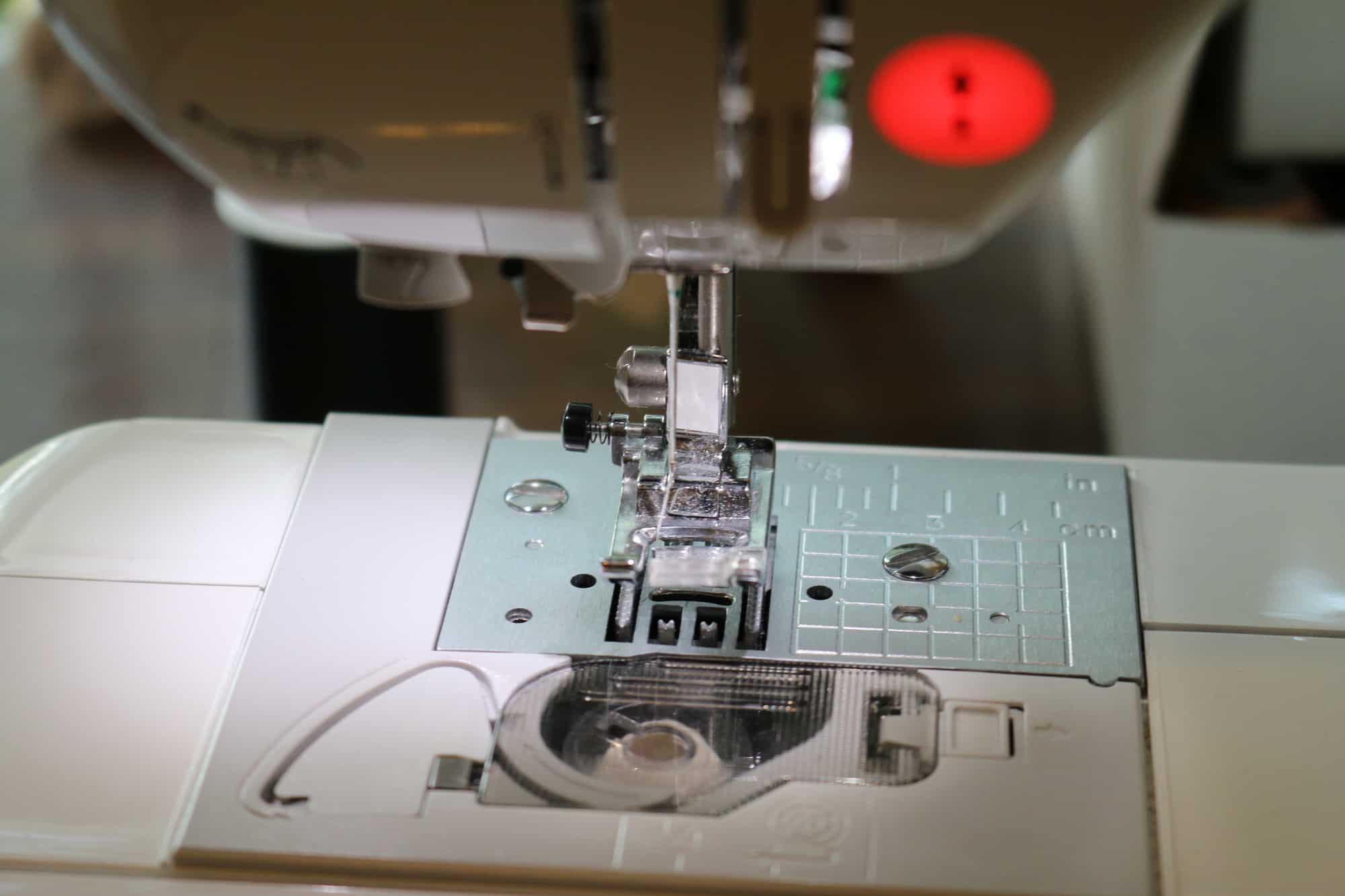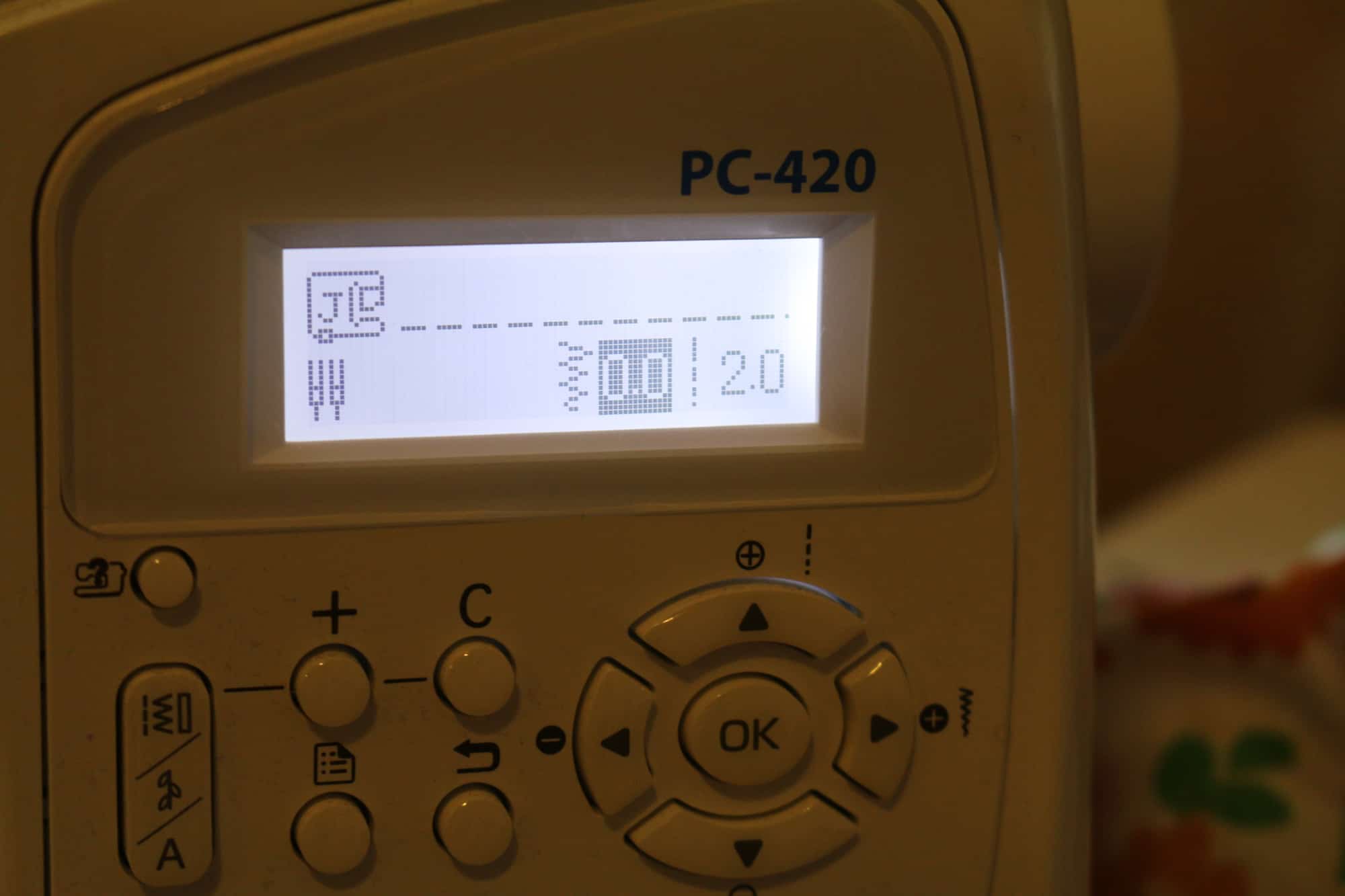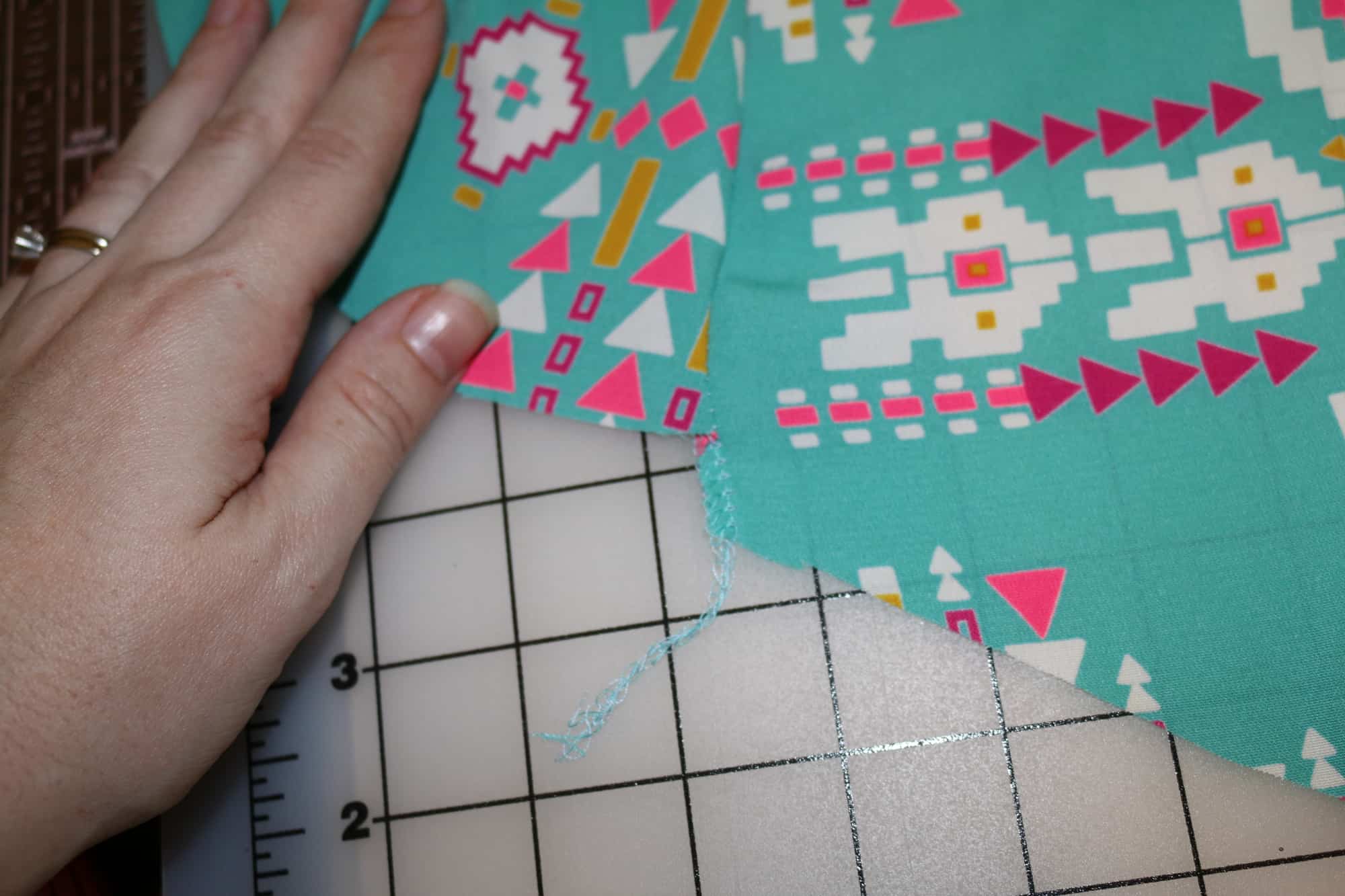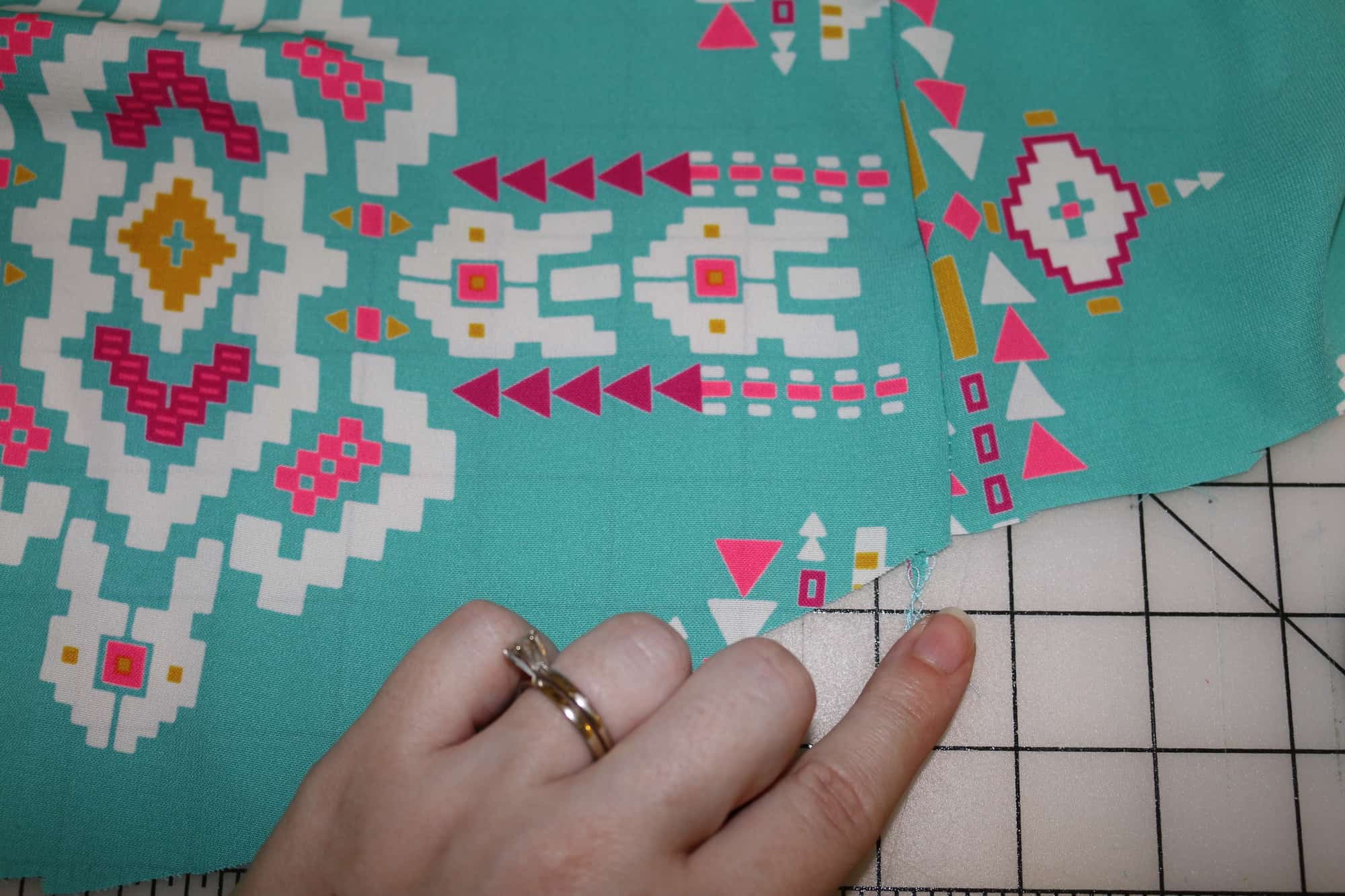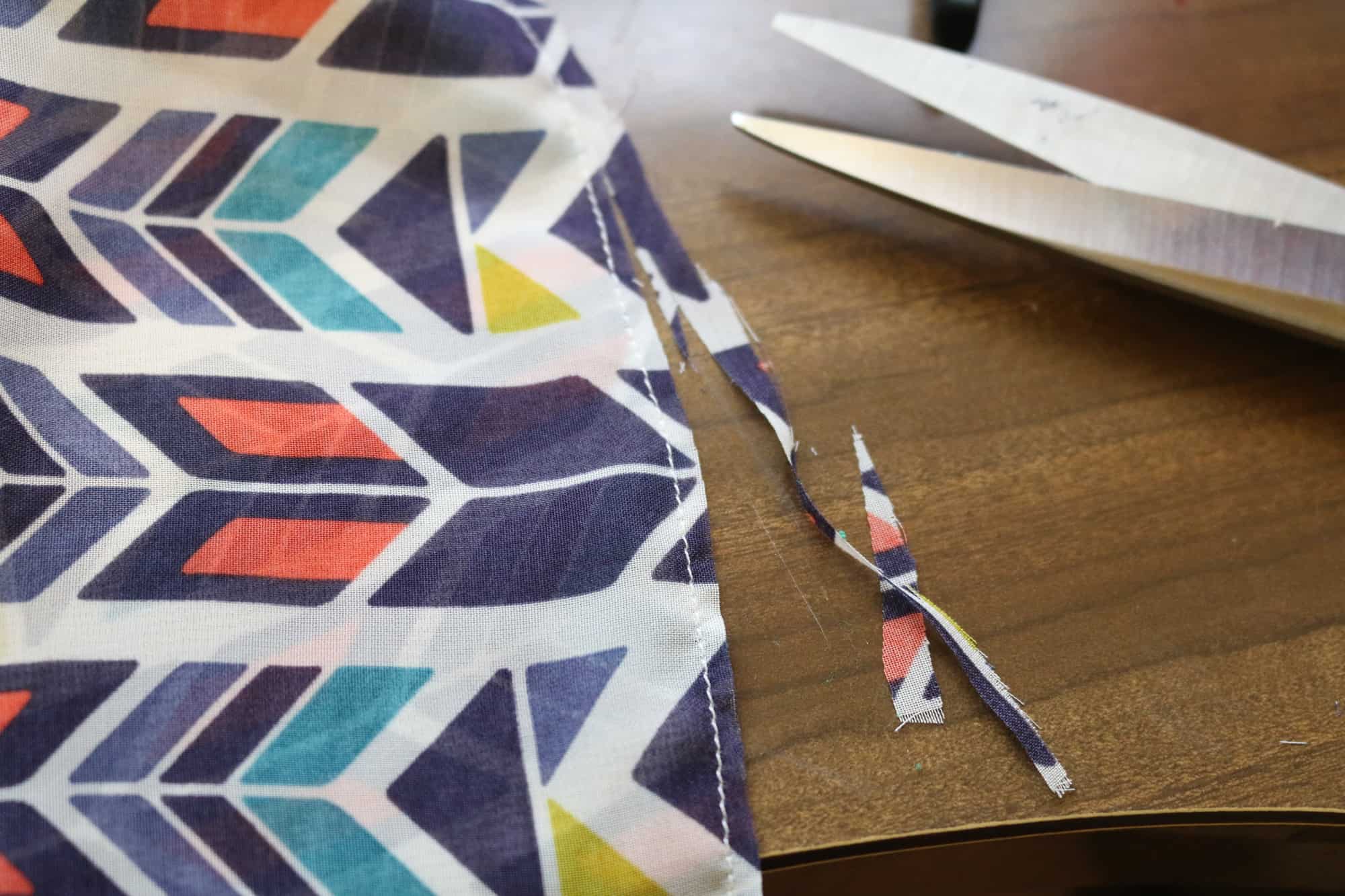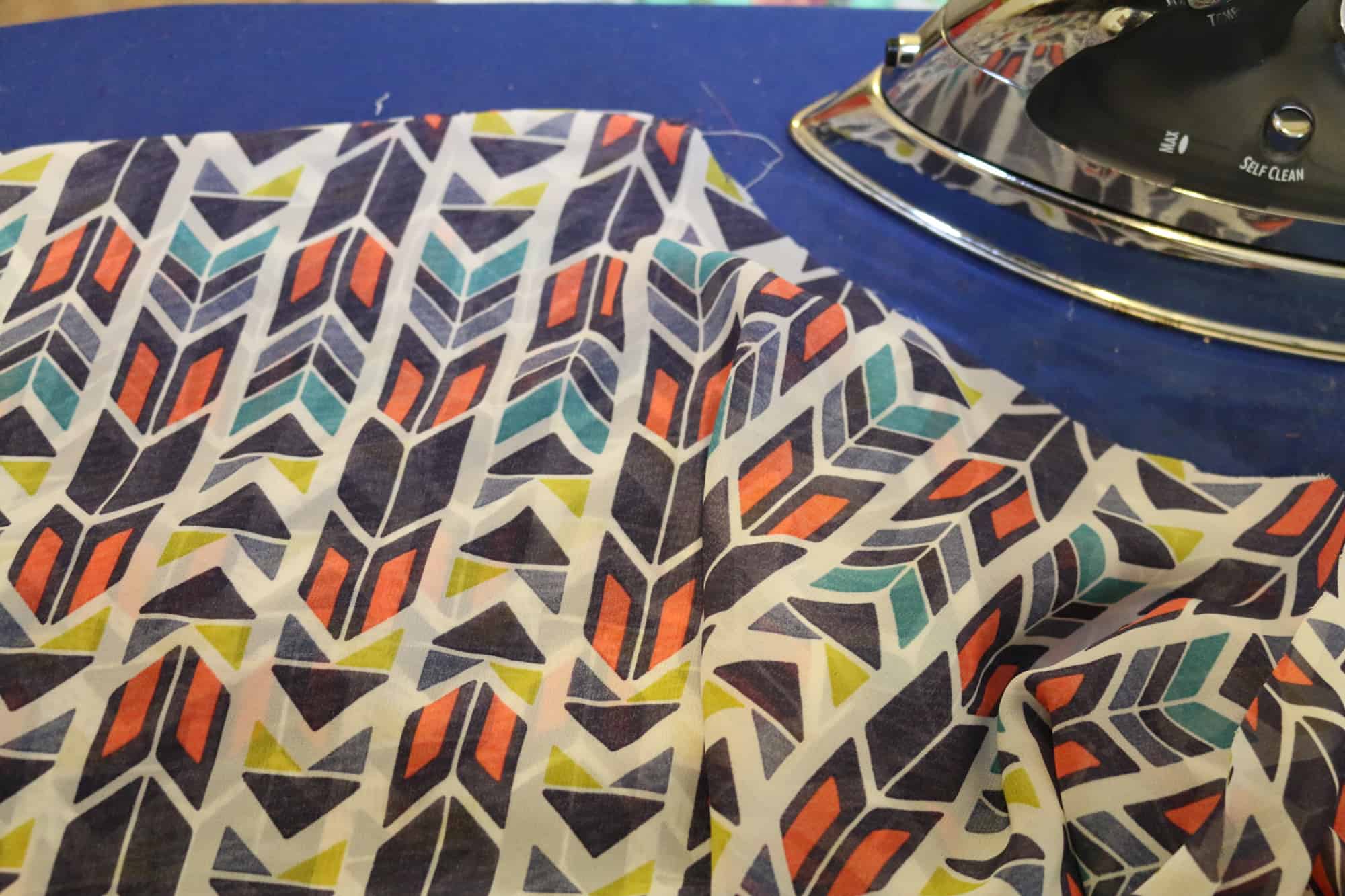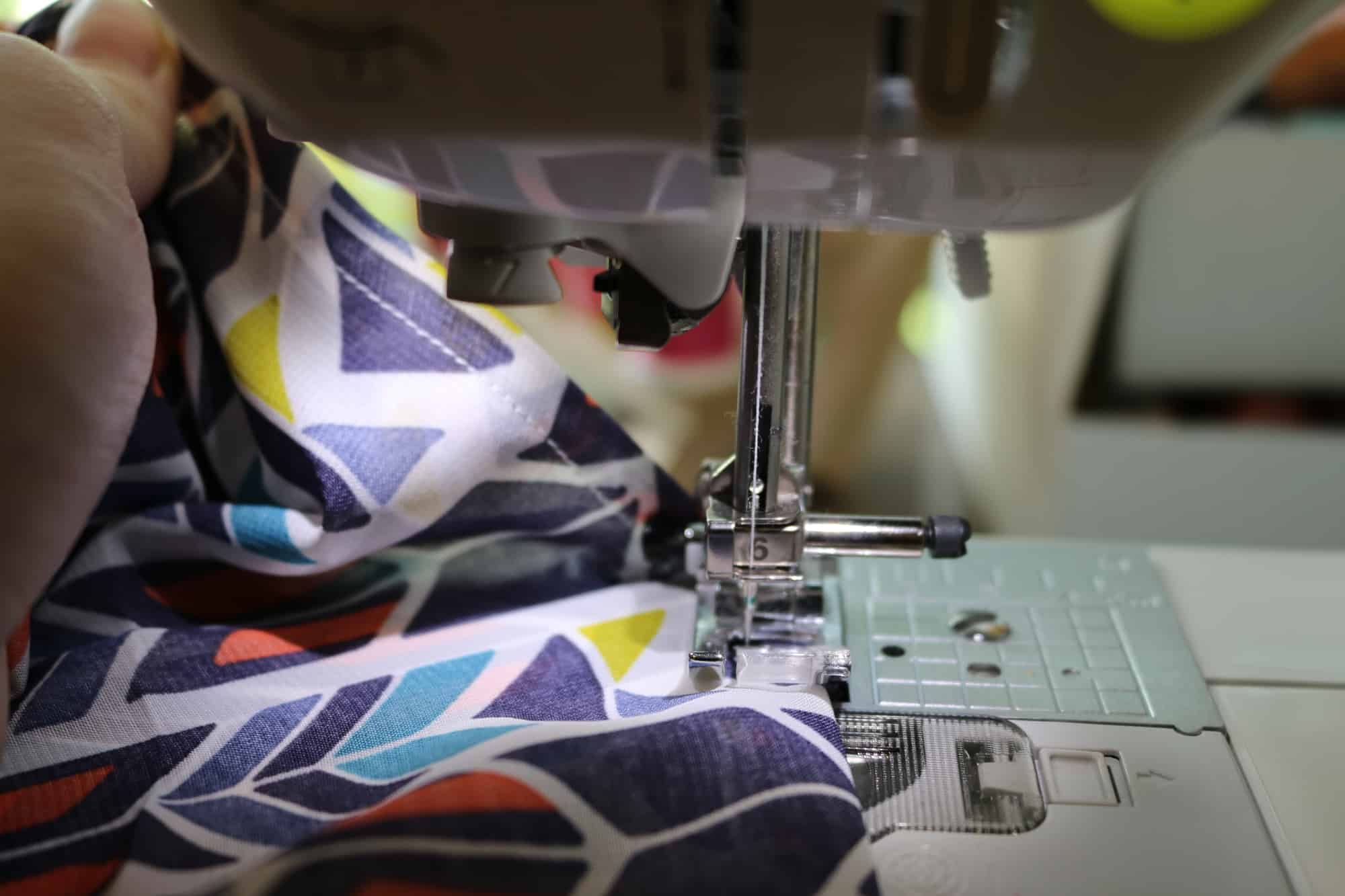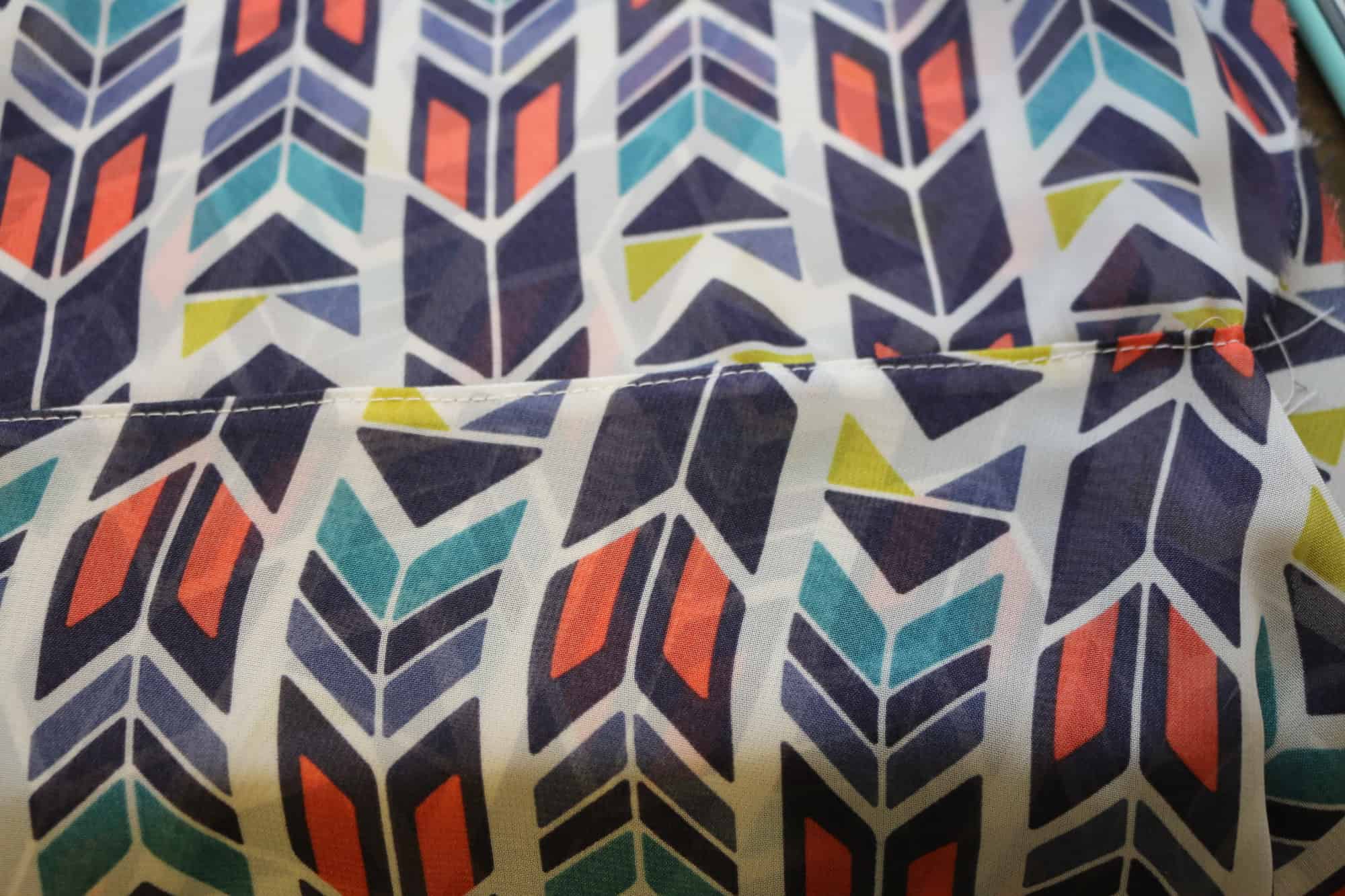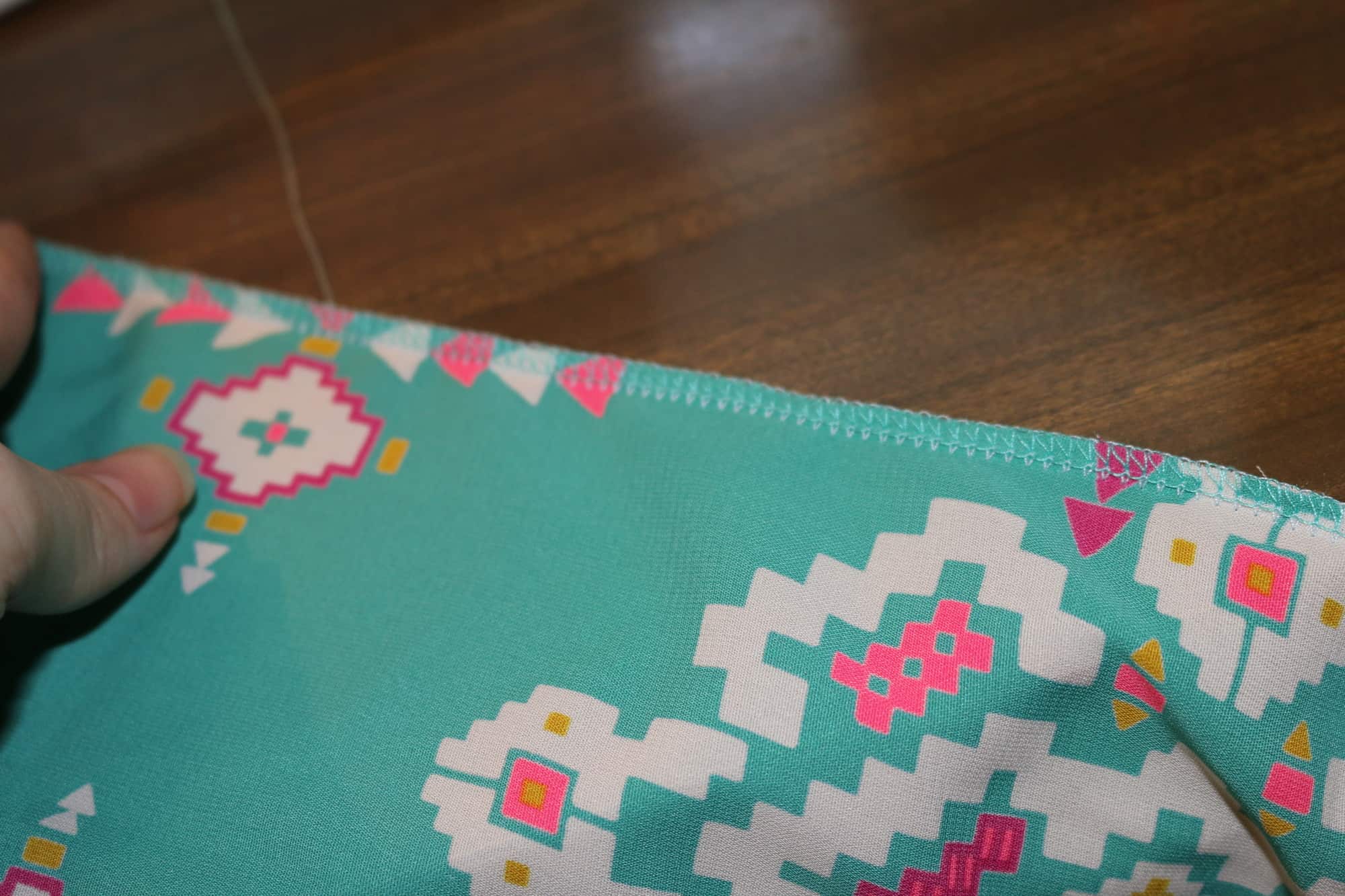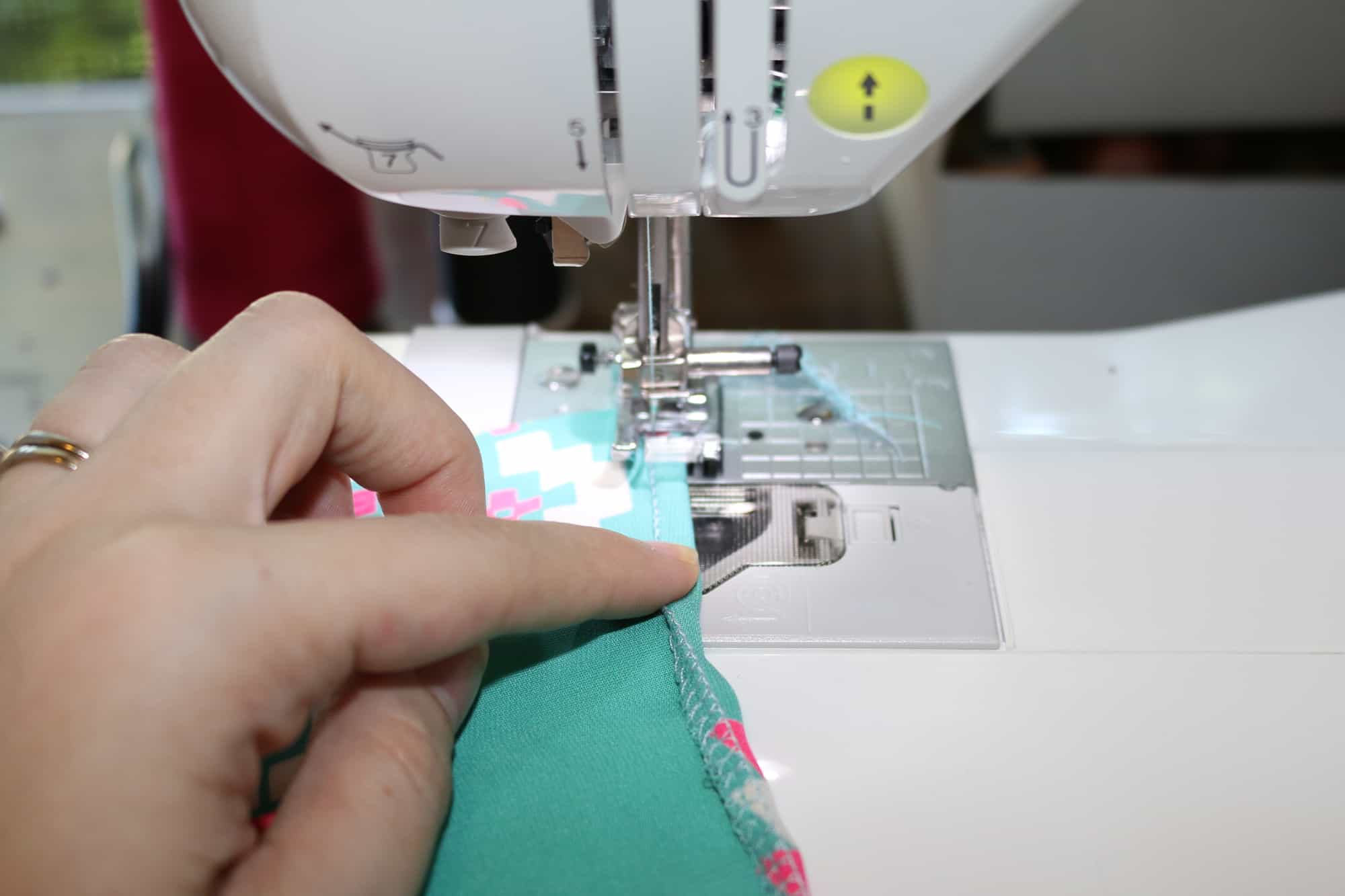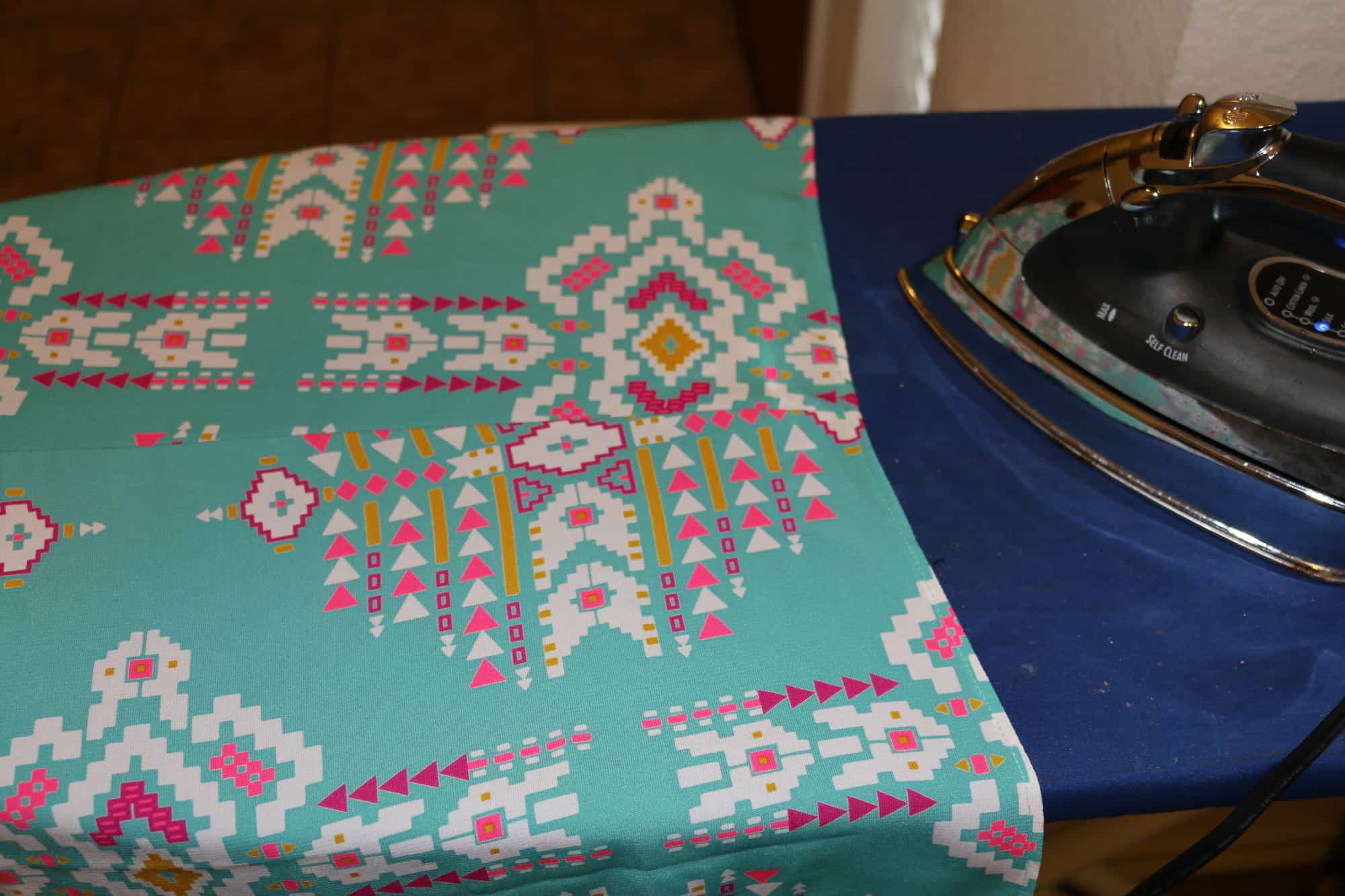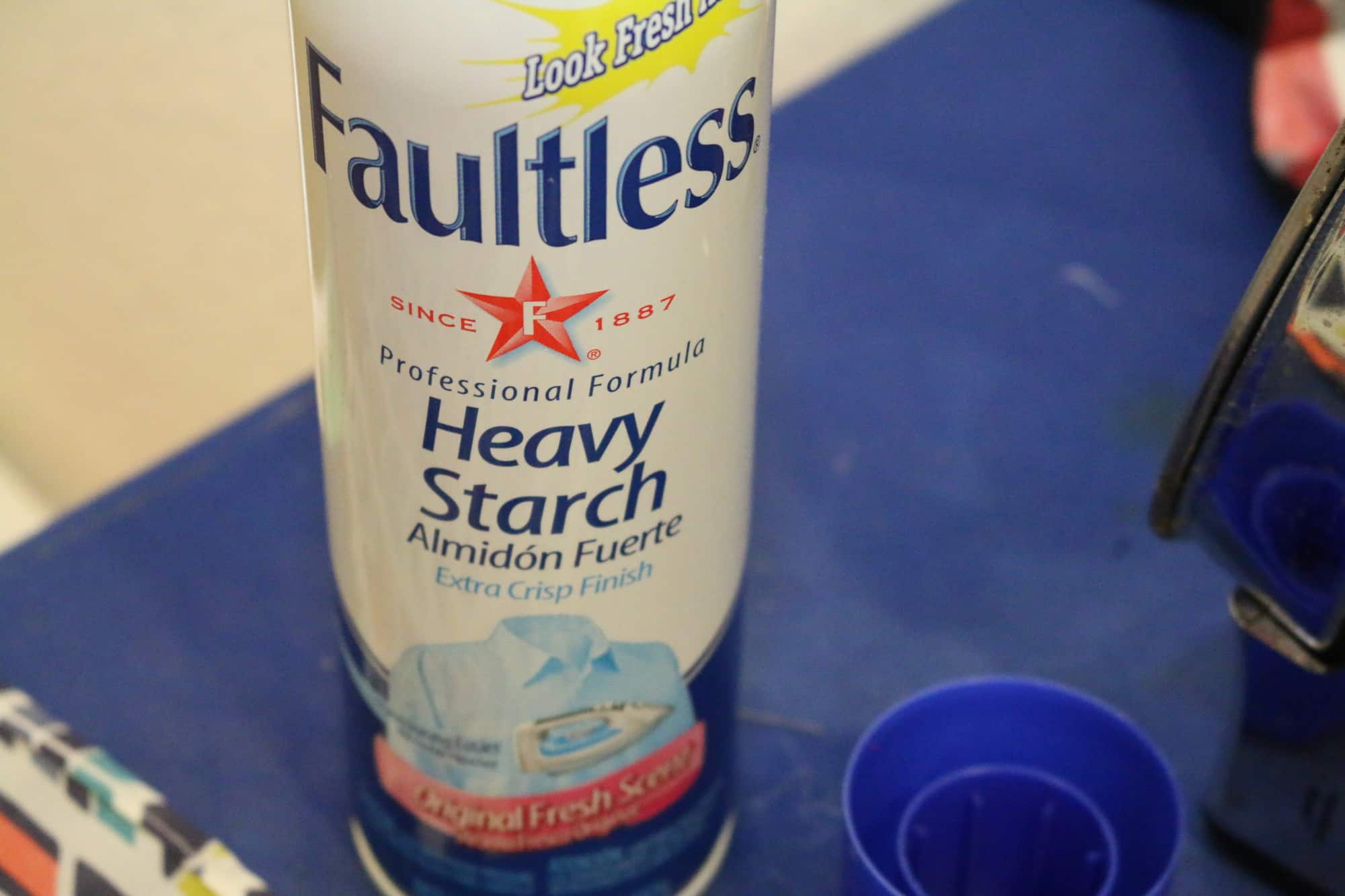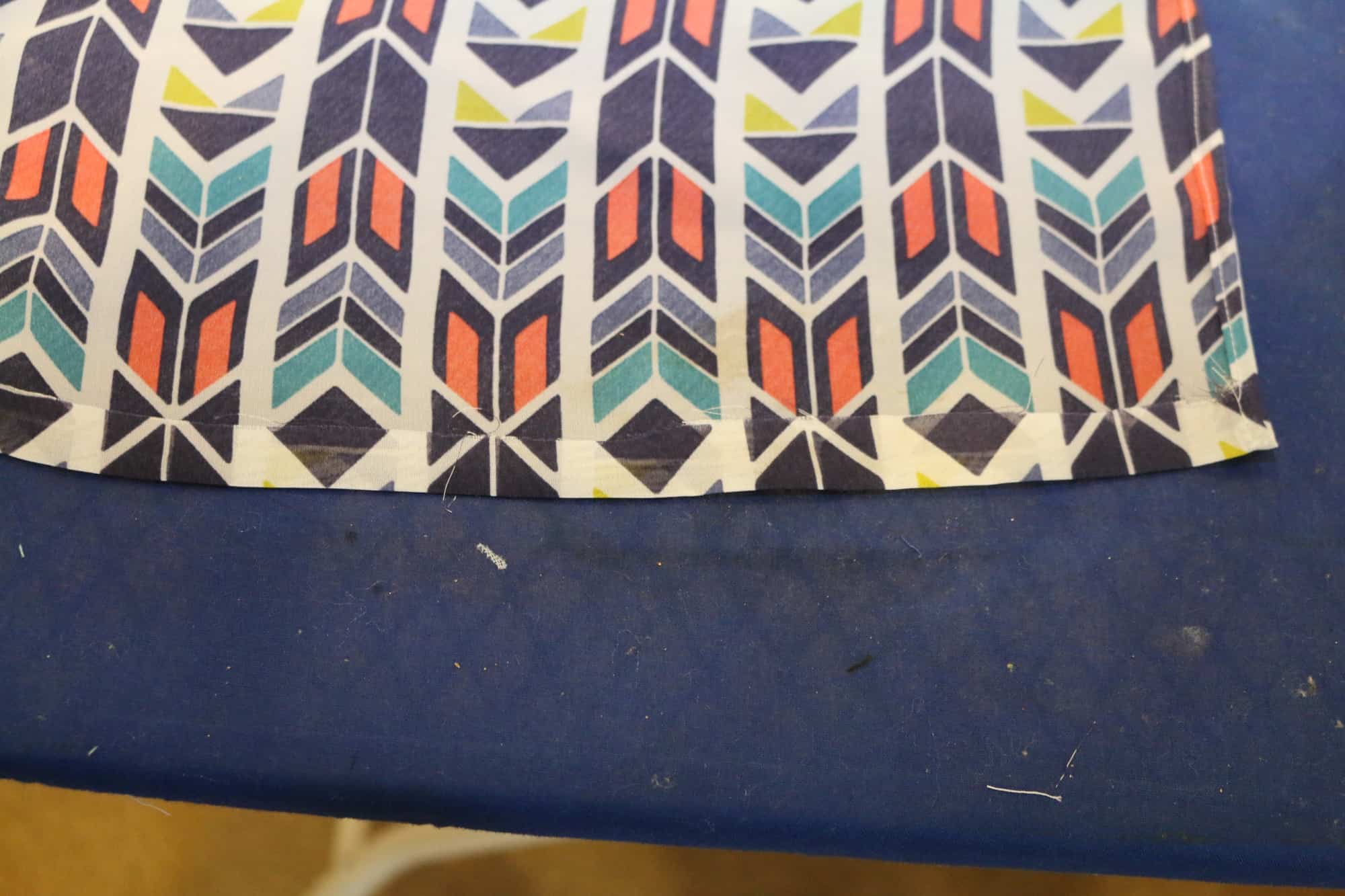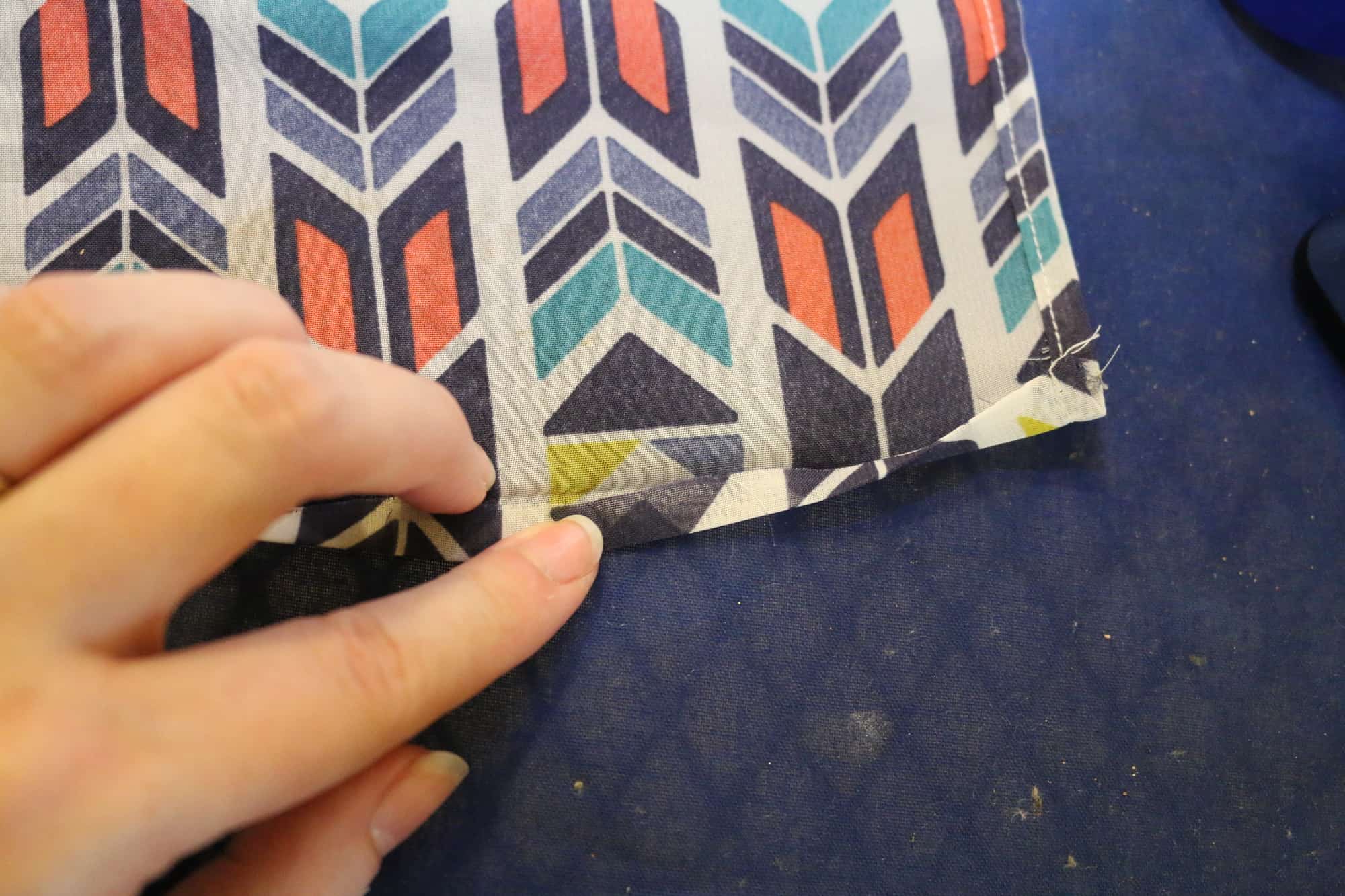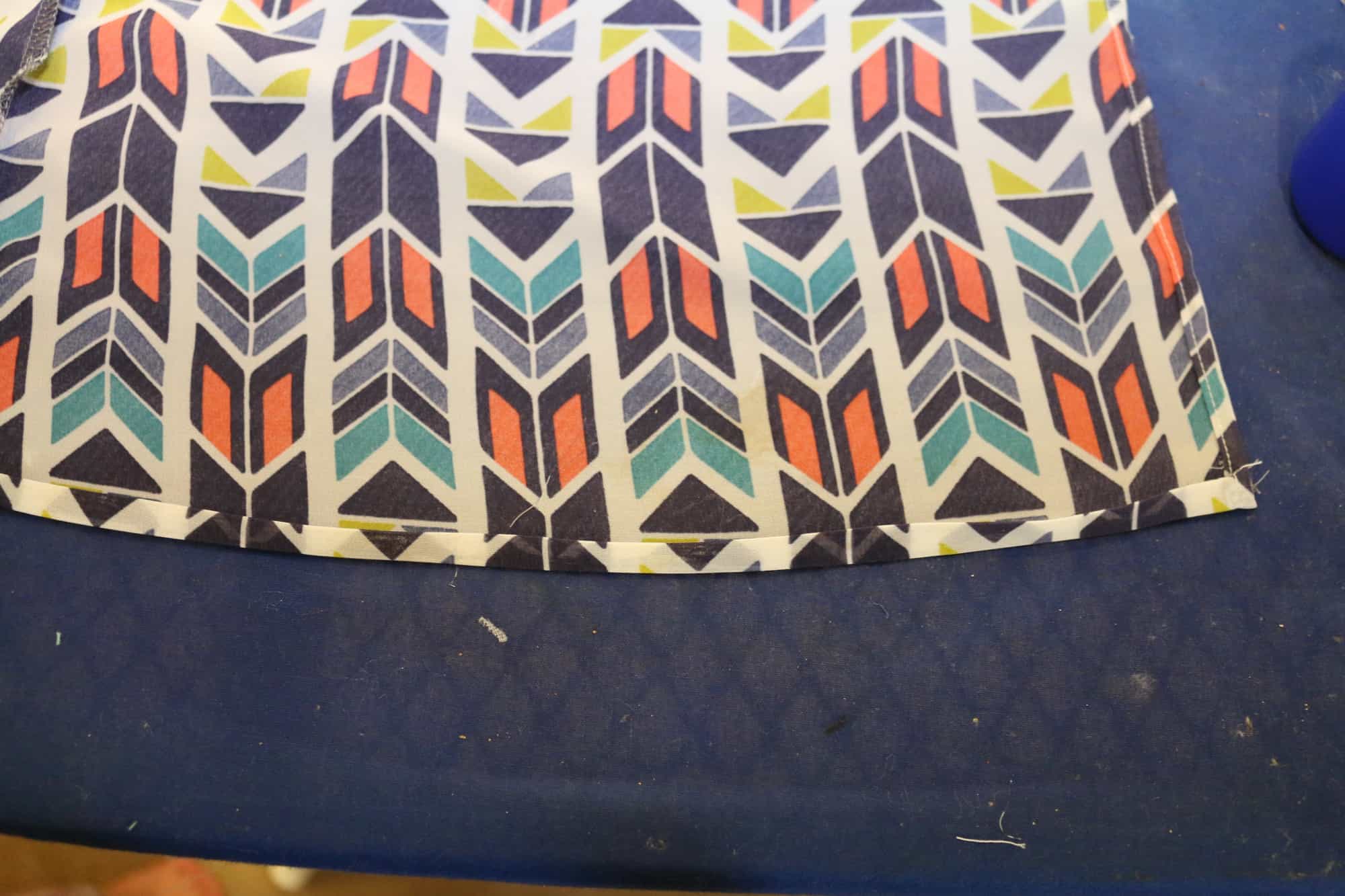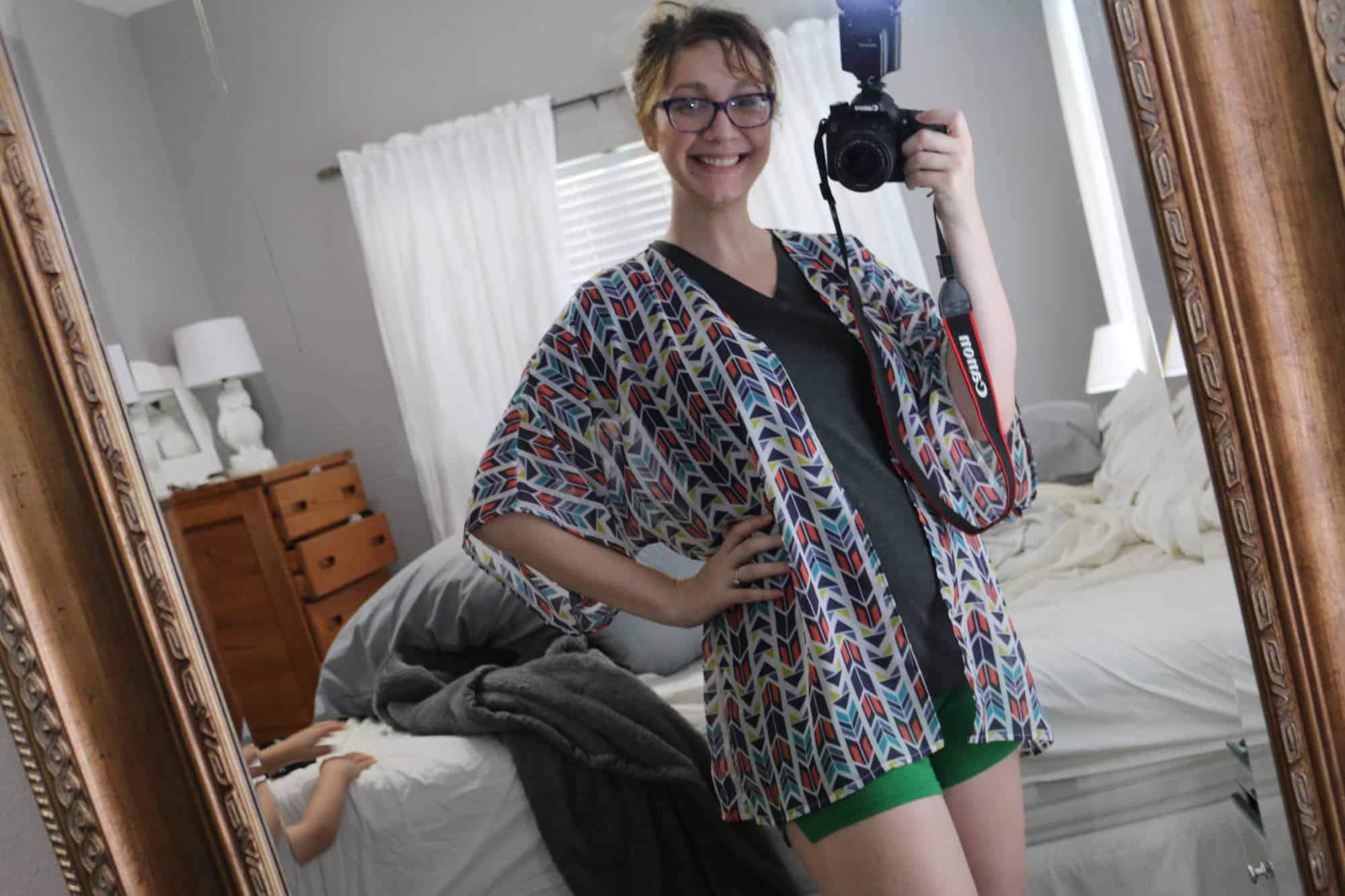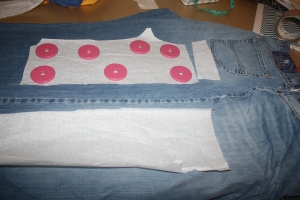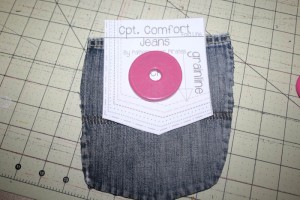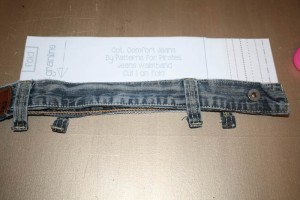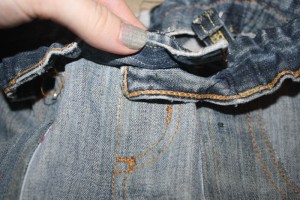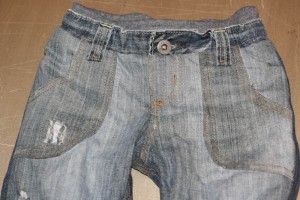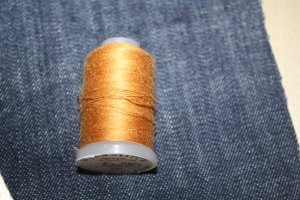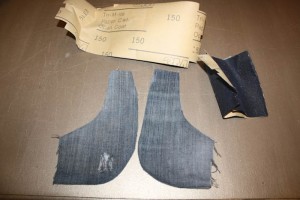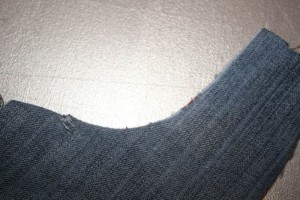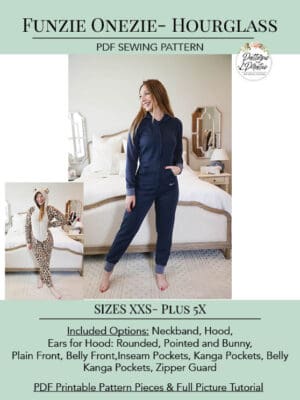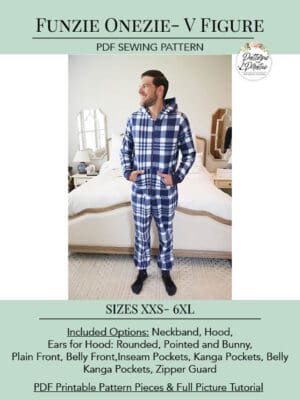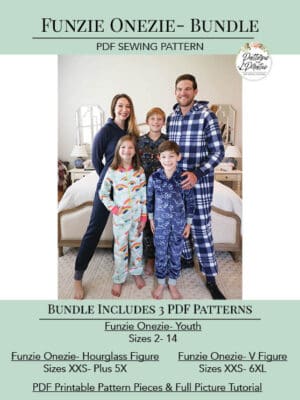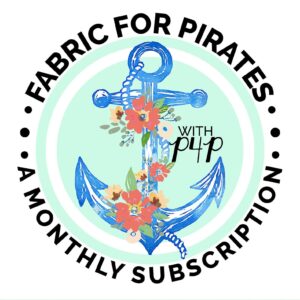The correct use of interfacing is one of the main things that takes your garment sewing to the next level. Today we will be talking about different types of interfacing, why you might want to use it and how to correctly apply it.
The first thing we need to clarify is the difference between stabiliser and interfacing. Getting these two confused is easy to do, and people can often buy the wrong one for their needs, but their uses are quite different.
STABILISER
Stabiliser is a type of textile used to add extra weight to a particular part of a piece of fabric, usually so some sort of decorative work can be added to that section. For example, you might add stabiliser to the wrong side of the front of a pair of children’s pyjamas to add some embroidery or applique to the bodice. The stabiliser helps keep the fabric from distorting when adding the decoration to it. It can be left on, trimmed down or torn off after use, depending on it’s type. The picture below shows some embroidery on the reverse of a pair of pyjamas. You can see the tear-away stabiliser still sitting between the A and the Y, after the rest has been removed.
INTERFACING
Interfacing is a type of textile used on the wrong side of a fabric to make that particular area stronger/more weighty. For example it is often used in shirt collars to help them stand upright. The interfacing gives the fabric more rigidity and is not removed, it is permanently attached.
There are two types of interfacing, differentiated by the way you attach them to your fabric. ‘Sew In’ interfacing is sewn onto the wrong side of your main fabric, within the seam allowance so it is not visible when the garment is finished. Alternatively it can be quilted on in a particular pattern of your choice, so that it is visible when completed. It seems to be less popular these days, but is the traditional, couture interfacing.
More popular is ‘Fusible’ interfacing. This is the same as ‘Sew In’ but it has a layer of heat activated adhesive on the wrong side, which means it can be ironed directly onto the wrong side of your main fabric and adheres permanently. The instructions for ironing will either be printed on the selvedge, if you have bought it by the metre, or they will be on the packet if you have bought it bagged. It is important that you ensure the interfacing is fully adhered before sewing the garment together because otherwise it can start to peel off and look messy. This picture below shows an example of an iron-on interfacing attached to the wrong side of a piece of cotton.
Interfacing comes in many different weights, from a light weight interfacing used to add a little extra body to the facing on a silk blouse, to a very heavy weight interfacing used to reinforce the brim of a cap/hat. I used a medium weight interfacing along the placket of my So Classic Sundress to give added support for the poppers and stop it distorting with wear.
Pattern instructions will advise you which weight of interfacing you will need, so that you can ensure you purchase the type needed to get the finish shown in the pattern listing pictures. For example, the Timeless Tunic notions require a lightweight interfacing for adding body to the neckline facing to help it keep the correct shape.
You will also find interfacing used in woven patterns to add body/structure/strength to shoulder seams, around pocket openings, along plackets, in collars, and even over entire bodice and sleeve pieces in jackets and coats.
As well as woven interfacing, you can also find knit/stretch interfacing used for adding greater structure or strength to knit fabrics. It can be used to stop these fabrics from stretching out too far, for example it is often used around pockets in a knit dress, so that the dress doesn’t become misshapen with use. I like to use it to add greater structure to the front of my Go To Jacket before sewing on the zipper, as it helps stop the fabric stretching out when attaching the non-stretch zipper to the stretch fabric.
In this video I discuss a few different types of interfacing and show how they are adhered to fabric. Sometimes seeing the fabrics being handled can give you a much clearer idea of what they would be like to use in real life.
Whichever type or weight of interfacing you need, the pattern you are using will give you details of what you need and when you need to use it.
Now that you know more about how to use interfacing, why not take a look at one of these patterns above or the Timeless Tunic or Tiny Timeless and put your new found skills to use.
Happy Sewing!
Dana x
